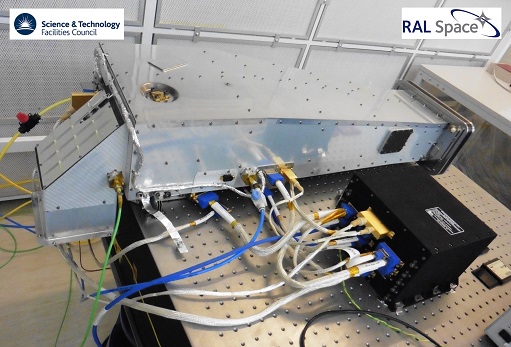Solar Orbiter
Solar Orbiter is a mission of collaboration between ESA and NASA, selected as the first medium (M)-class mission of ESA's Cosmic Vision 2015 - 2025 programme for launch in 2019. Solar Orbiter's goal is to address the central question of Heliophysics: how does the Sun create and control the heliosphere? Solar Orbiter is designed to identify the origins and causes of the solar wind, the heliospheric magnetic field, the solar energetic particles, the transient interplanetary disturbances, and the Sun's magnetic field.SPICE spectrometer
SPICE is one of 10 instruments on board Solar Orbiter. It is a high resolution imaging spectrometer operating at extreme ultraviolet wavelengths. SPICE will address the key science goals of the Solar Orbiter mission, by providing the quantitative knowledge of the physical state and composition of the plasmas in the solar atmosphere, in particular investigating the source regions of outflows and ejection processes which link the solar surface and corona to the heliosphere. SPICE is designed to study the structure, dynamics and composition of the transition region and corona by observing key emission lines on the solar disk on timescales from seconds to tens of minutes.The two EUV wavelength bands, 70.4 - 79.0 nm and 97.3 - 104.9 nm, observed by SPICE are dominated by emission lines from a wide range of ionized atoms of H, C, O, N, Ne, S, Mg, Si, and Fe, formed in the Sun's atmosphere at temperatures from 10 thousand to 10 million Kelvin. More details about the instrument design, performance and its science goals are given here.
SPICE Instrument Consortium
Since 2012, RAL Space manages an international consortium developing the SPICE instrument. The instrument Consortium Lead is Dr Andrzej Fludra and the Project Manager is Dr Martin Caldwell. ESA is the lead funding agency for SPICE. Nationally-funded hardware contributions have been provided by France, Germany, Switzerland and the United Kingdom, and the telemetry processing pipeline will be provided by Norway.The Instrument Consortium members are:
- RAL Space, STFC Rutherford Appleton Laboratory, UK
- Institut d'Astrophysique Spatiale, France
- Max-Planck-Institut für Sonnensystemforschung, Germany
- Physikalisch-Meteorologisches Observatorium Davos and World Radiation Centre, Switzerland
- Institute of Theoretical Astrophysics, University of Oslo, Norway
- NASA Goddard Space Flight Center, USA
- Southwest Research Institute, USA
- Almatech, Lausanne, Switzerland
- APCO Technologies, Switzerland
- European Space Tribology Laboratory, ESR Technology, UK
- Physikalisch-Technische Bundesanstalt, Germany
Instrument Status
SPICE flight model was delivered to ADS, Stevenage between May and August 2017. The hardware was installed on the spacecraft shortly after delivery, and the rest of the spacecraft assembly process is currently on-going. RAL Space staff will support the first tests of the SPICE flight model with the spacecraft during the next few months. Meanwhile, preparations are underway for the environmental tests of the satellite (vibration, thermal etc.). The instrument team, led by RAL Space, is also responsible for the in-flight commissioning of SPICE.


